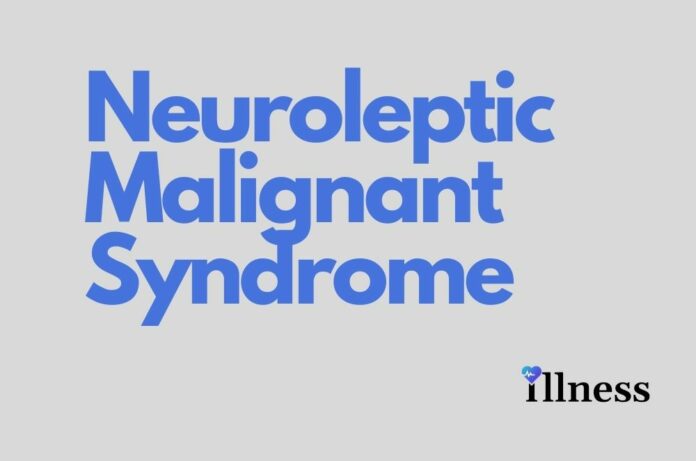Overview
Neuroleptic Malignant Syndrome (NMS) is a rare but potentially life-threatening reaction to the use of almost any group of antipsychotic drugs or major tranquilizers (neuroleptics). These drugs are commonly prescribed for the treatment of schizophrenia and other neurological, mental, or emotional disorders. Several of the more commonly prescribed neuroleptics include thioridazine, haloperidol, chlorpromazine, fluphenazine, and perphenazine.
The syndrome is characterized by high fever, stiffness of the muscles, altered mental status (paranoid behavior), and autonomic dysfunction. Autonomic dysfunction alludes to defective operations of the components of the involuntary (autonomic) nervous system, leading to wide swings of blood pressure, excessive sweating, and excessive secretion of saliva.
A genetic basis for the disorder is suspected but not proven. It does appear to be clear that a defect in the receptors to dopamine (dopamine D2 receptor antagonism) is an important contributor to the cause of the neuroleptic malignant syndrome.
Commonly Associated With
Fulminating Hyperpyrexia; Neuroleptic Malignant Syndrome
Cause
Neuroleptic malignant syndrome comes about, most likely, as a result of “dopamine D2 receptor antagonism”. Dopamine is a chemical substance (neurotransmitter) found in the brain and elsewhere in the central nervous system that acts to convey messages from one cell to another. In some way, the use of a particular drug blocks the receptor in the brain cell for dopamine.
When the dopamine receptors in the hypothalamus or another bundle of nerve fibers (nigrostriatal pathways) and/or the spinal cord are blocked, increased muscle rigidity is the result. The interference with the dopamine receptors in the hypothalamus is also probably responsible for high body temperature, as well as the swings in blood pressure.
Some clinicians believe that neuroleptic malignant syndrome may be related to malignant hyperthermia, a genetic disorder characterized by an abnormal reaction to anesthesia drugs.
Symptoms
Symptoms of neuroleptic malignant syndrome usually include very high fever (102 to 104 degrees F), irregular pulse, accelerated heartbeat (tachycardia), increased rate of respiration (tachypnea), muscle rigidity, altered mental status, autonomic nervous system dysfunction resulting in high or low blood pressure, profuse perspiration, and excessive sweating.
Other symptoms may include liver or kidney failure, abnormally high potassium levels (hyperkalemia), major destruction of skeletal muscle tissue (rhabdo-myolysis) or blood clots in veins and arteries.
Exams & Tests
The diagnosis of the neuroleptic malignant syndrome is based on the presence of characteristics that include treatment with neuroleptic drugs within the past 1-4 weeks. high body temperature (greater than 38 degrees centigrade); muscle rigidity; and at least five of the following:
Change in mental status
Rapid heartbeat (tachycardia)
Low or high blood pressure (hypo- or hypertension)
Excessive sweating (diaphoresis)
Excessive saliva production (sialorrhea)
Tremor
Incontinence
Increased creatine phosphokinase, or increased urinary myoglobin
Increased number of white blood cells (leukocytosis)
Increased concentrations of metabolic acids in blood and urine
Exclusion of other drug-induced psychiatric or systemic illness.
Treatment
Treatment of neuroleptic malignant syndrome consists of withdrawal of neuroleptic medications under a doctor’s supervision, immediate measures to restore appropriate water and nutrient levels, and steps to lower the individual’s body temperature. Medications prescribed as treatment may include skeletal muscle relaxants, such as dantrolene; stimulators of dopamine production and activity, such as bromocriptine; and/or continuous perfusion of central nervous system depressants, such as diazepam.
Complications that may result from neuroleptic malignant syndrome, such as kidney (renal) insufficiency, deficiency of oxygen reaching the tissues (hypoxia), and/or decreased alkalinity of the blood and tissues (acidosis) can be extremely serious and must be treated immediately. Once patients have recovered from neuroleptic malignant syndrome, about 87% will be able to tolerate an antipsychotic at some point in the future. Physicians usually switch to a different antipsychotic class and to an atypical antipsychotic. Such patients must be carefully monitored since recurrences of neuroleptic malignant syndrome are not infrequent.
Electroconvulsive treatments have been prescribed for patients with neuroleptic malignant syndrome with varied results.
Source
https://www.ninds.nih.gov/Disorders/All-Disorders/Neuroleptic-Malignant-Syndrome-Information-Page
https://rarediseases.org/rare-diseases/neuroleptic-malignant-syndrome/



